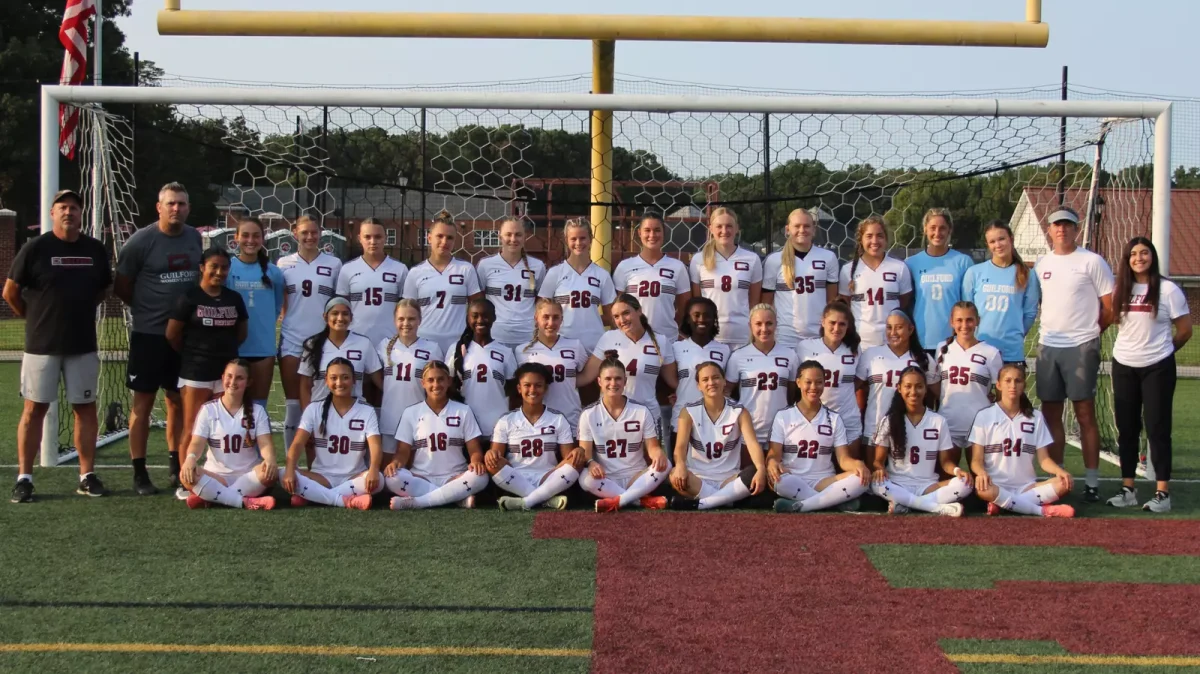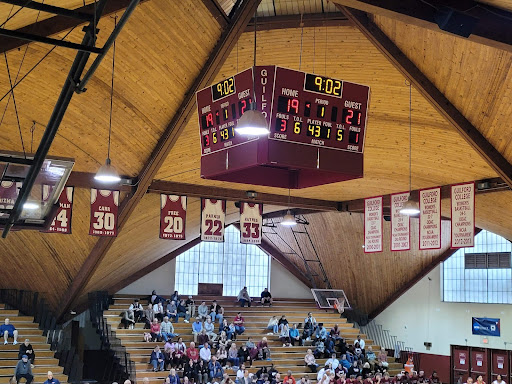The college experience is comprised of prominent memories, responsibilities and interactions. For a select group of students, these components revolve around their dedication to engage in intercollegiate sports.
The media has recently covered national concerns regarding team bonding and its borderlines, which may be vital to reiterate. In Guilford College’s all-athlete meeting this fall, team image, twitter posts and appropriate types of online communication were all discussed with substantial rigidity regarding appropriateness.
The question students, coaches and athletic directors are all struggling with is: When is the line crossed between substantial team bonding and inappropriate group behavior?
Head volleyball coach Emily Gann noted that team bonding is a vital component of the intercollegiate athlete experience.
“Teams have to get along to play well together,” said Gann.
Although she could not recall any acts of hazing or publicly-noted line crossing at Guilford, she did acknowledge the existence of such behavior, and the consequences it has for schools across the country.
“People on teams are together all the time and they want to hang out with each other,” said junior lacrosse player Kyle Smith. “And it’s hard for athletes — given all the time they spend practicing and being together — to make other friends and hang out with other people.”
This excessive time commitment is a vital aspect of a team’s ability to play cohesively and win conference games.
“If there’s a grudge between two members on the team, the team is naturally going to pick a side and that could create a separation,” said senior football player Thor Pate. “If it’s a small team, like the volleyball team, the separation could be a very negative thing.”
“(Team bonding) is expressed on the court and shown in how well the team plays together,” said sophomore volleyball player Morgan McKinnon.
“If the team doesn’t get along, it’s going to be tough to play well together because you need team chemistry to be able to play well,” said Smith.
These opinions solidify the idea that the time teams spend together off the field is an important underlying factor for their overall success.
Bonding varies for each team based on general dynamics and size. Football bonding is “not a forced team bonding,” explains Pate, but a result of seeing the same people from “eight in the morning until ten at night” during football camp.
However, he expressed that, due to the size of the program, it is difficult to thoroughly connect with everyone on the team.
“Some sports that have smaller units will probably bond more tightly than teams with large numbers,” said Pate. “I don’t think we have any forms of hazing, but there are certain teams where they are always together and don’t branch out enough.”
Team bonding is necessary to ensure success during a sports season, but it need not reach an inappropriate level. Guilford College athletes seem to uphold the opinion that each team is different in their approach to team bonding, but hazing has not made its way onto campus.
To ensure that this line is never crossed, it may be crucial to consistently reassess which out-of-practice interactions are healthy for a cohesive team, and which steer too close to the borderline.






